
by AGParts Education | Accidental Damage Protection, Chromebook Repair, Chromebooks
Chromebooks are the most popular K-12 device used in schools today. They are affordable and easy to manage. As students use the devices, accidents are bound to happen. What will your school do when your Chromebooks need repaired?
Determining the most cost-effective solution to managing your 1:1 Chromebook deployment can be challenging. There are two ways to manage your repairs. We’ll explore both options below.
Option 1: In-House Repairs
Performing in-house repairs is a cost-effective and timely solution for many districts. Since there are few moving parts In a Chromebook, repairs are generally simple. There is no time lost in shipping devices or waiting for devices to return after repair. Repair turnaround is controlled by your bandwidth.
Don’t have the tech team necessary to perform in-house repairs? Leverage your student’s interest and skill with a Chromebook Repair Program.
If your district chooses in-house repairs, you’ll need Chromebook tutorials, tools, and support in case issues arise. Most importantly, you need a partner you can trust for replacement Chromebook parts. When considering a parts partner, keep the following in mind:
Quality of Parts
Where your school sources parts from matters. There is reason why OEMs (Acer, HP, Lenovo, etc.) do not sell generic or counterfeit parts. It’s the same reason why we don’t.
Generic and counterfeit parts may seem like a great deal, but they could be more than you bargain for. Made with substandard components, these parts have a higher likelihood of failure. Even worse, they pose a serious safety risk to your students and staff. Due to their faulty manufacturing and substandard components, they are a fire hazard.
Choose OEM or equivalent parts and UL-certified adapters. You can still save money on these parts by purchasing recertified parts.
A vendor putting their name on a part still doesn’t guarantee the parts are authentic. The only way to guarantee a part is authentic is to purchase parts from a supplier that only supplies authentic parts like AGParts Education. All parts are inspected and tested to verify their authenticity.
Availability & Lead Time
With shortages pervasive in every industry, Chromebook parts are no different. Unfortunately, there are parts suppliers that will overpromise and underdeliver. They promise your part is in stock but intentionally send you another part to buy time until your part does come in.
We’re not going to pretend we’ve been impervious to these shortages, but our global resources have allowed us to fulfill our school partners’ needs often. You never have to worry about any bait and switch. It goes against everything we stand for. If your part isn’t in stock, we’re going to tell you. And we’ll tell you when it becomes available as well.
With in-stock parts, expect your order to ship the same day.
Warranty & Returns
All parts are backed by our industry-leading one-year or limited-lifetime warranty. Just another way that we stand behind all our parts and products. So, kiss 90-day warranties goodbye. Say hello to a one-year parts warranty on adapters, batteries, and motherboards, and a limited-lifetime warranty on all other parts.
Order parts from us your school no longer needs? We don’t want your district to be stuck with unnecessary parts—send them back to us! We offer an extended return policy. In the spirit of partnership, we don’t apply restocking fees to these returns.
Option 2: Accidental Damage Protection
Safeguarding your Chromebook investment with an accidental damage protection like AGiProtect is another cost-effective way to manage Chromebook repairs. Powered by our sister company, AGiRepair, AGiProtect is a complete accidental damage protection plan for K-12 devices.
Unlike other ADP plans, AGiProtect is a one-time fixed cost with no hidden fees and unlimited repairs. There is no deductible to meet or repair fees. Not only that, but the same company that supplies your protection plan also performs your repairs. Often, companies will outsource repairs to a third party. With AGiProtect, all repairs are performed at a state-of-the-art facility by AGiRepair’s team of highly trained technicians. All parts are provided by AGParts Worldwide, our parent company.
From Chromebook parts to tech buyback, AGParts Education can help simplify your 1:1 Chromebook deployment. Supporting over 7,500 U.S. school districts, find out how we can help your district. Contact us today!
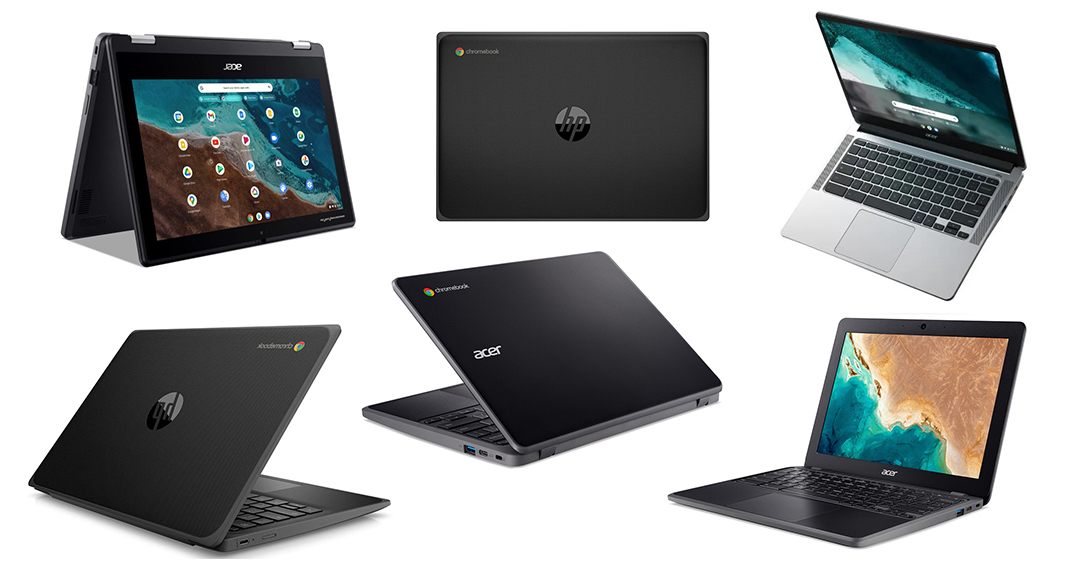
by AGParts Education | Acer, Announcements, Chromebooks, Education Technology, HP, K-12 Education
The classroom environment is constantly changing. Educators and students need devices that can keep up. Check out these new Chromebook models for education currently available or forthcoming in 2022.
For Students
Updated: Acer Chromebook 512
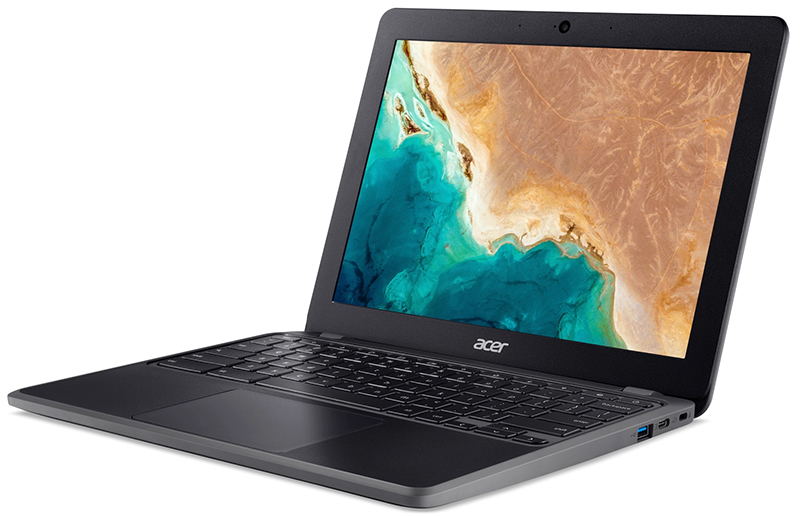
New Model: C852
Announced: January 2022
Price: starts at $350
Processor: Intel Celeron N4500, Intel Celeron N5100, or Intel Pentium Silver N6000
Battery: 12 hours
Memory: 4-8GB RAM
Storage: 32-64GB eMMC
Screen: 12.0”
Resolution: 1366 x 912
Convertible: 180-degree hinge
Touch: Optional
Ports: (2) USB-C port, (2) USB-A 2.0 port, (1) Micro SD slot, (1) Headphone/microphone combo jack
Acer Chromebook 512 (C852) trades the traditional 16:9 aspect ratio for 3:2. This taller display makes it more suitable for reading and writing. With a 180-degree hinge and optional touch capabilities, it’s built for collaboration. Made with more recyclable plastics, it features a damage-resistant keyboard.
Updated: Acer Chromebook 511

New Model: C734/T
Expected Release: February 2022
Price: starts at $350
Processor: Intel Celeron N4500 or Intel Celeron N5100
Battery: 12 hours
Memory: Up to 8GB RAM
Storage: Up to 64GB eMMC
Screen: 11.6”
Resolution: 1366 x 912
Convertible: 180-degree hinge
Touch: No
Ports: (2) USB-C port, (2) USB-A 2.0 port, (1) Micro SD slot, (1) Headphone/microphone combo jack
Similar in specs to the Acer Chromebook 512, the Acer Chromebook 511 (C734/T) features the toy-safe plastic making it suitable for the youngest students. With 180*degree hinge, students can easily share their screen with others.
Updated: Acer Chromebook Spin 311

New Model: R722T
Expected Release: March 2022
Price Range: $400
Processor: MediaTek MT8183 2.0 GHz
Battery: 15 hours
Memory: Up to 8GB
Storage: Up to 64GB eMMC
Screen: 11.6”
Convertible: Yes
Touch: Yes
Ports: (1) USB-C port, (1) USB-A 2.0 port, (1) Headphone/microphone combo jack
Ideal for small hands, the convertible Acer Chromebook Spin 311 (R722T) features Antimicrobial Corning Gorilla glass for durability and enhanced hygiene. Keys are mechanically anchored to protect against curious students. The Chromebook is made of post-consumer recycled (PCR) making it particularly ecofriendly.
HP Fortis 11” G9 Q Chromebook
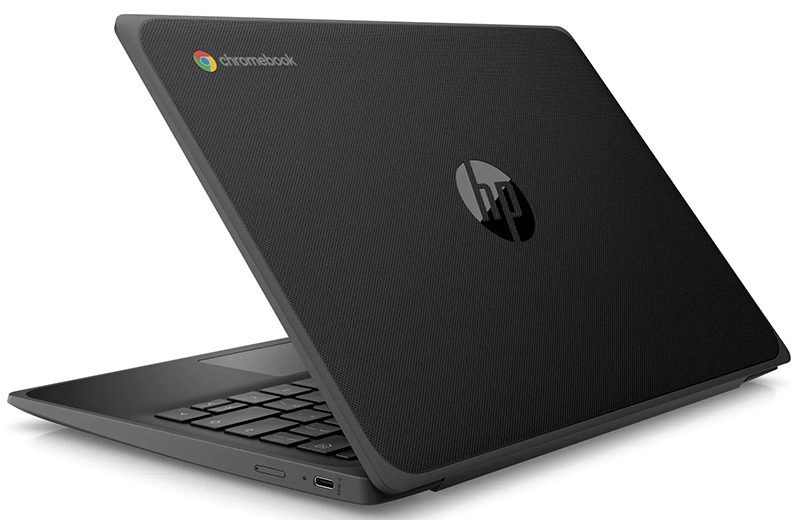
Expected Release: June 2022
Price Range: TBA
Processor: Qualcomm Snapdragon 7c
Memory: Up to 8GB
Storage: Up to 64GB eMMC
Screen: 11.6”
Ports: (2) USB-C ports, (1) USB-A port, (1) Headphone/microphone combo jack
With a battery that charges 90% in 90 minutes, the HP Fortis 11 G9 Q is part of HP’s brand-new education series of the same name. It features an HD privacy webcam and an anchored, spill-resistant keyboard. The new Fortis line claims to be ideal for blended learning and the entire unit can be wiped down with household disinfecting and cleaning wipes.
For Educators
Updated: Acer Chromebook 314
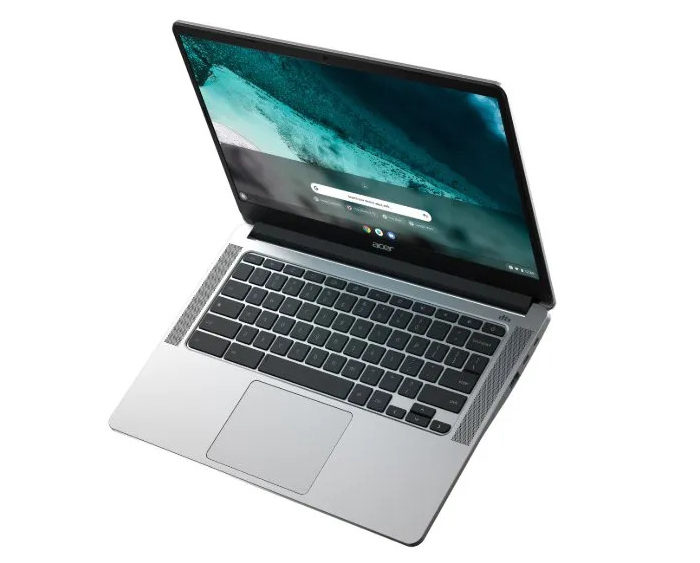
New Model: C934/T
Expected Release: Second half of 2022
Price: $430
Processor: Intel Celeron N Series, up to Intel Pentium Silver N6000
Battery: 10 hours
Memory: Up to 8GB RAM
Storage: Up to 128GB eMMC
Screen: 14”
Convertible: 180-degree hinge
Touch: No
Ports: (2) USB-C ports, (1) USB-A port, (1) headphone/microphone combo jack
The Acer Chromebook 314 features a flare-reducing webcam and upward-firing, making this Chromebook ideal for educators in noisy, busy environments. It also has the same 180-degree hinge, popular in this year’s Acer models.
HP Fortis 14” G10 Chromebook
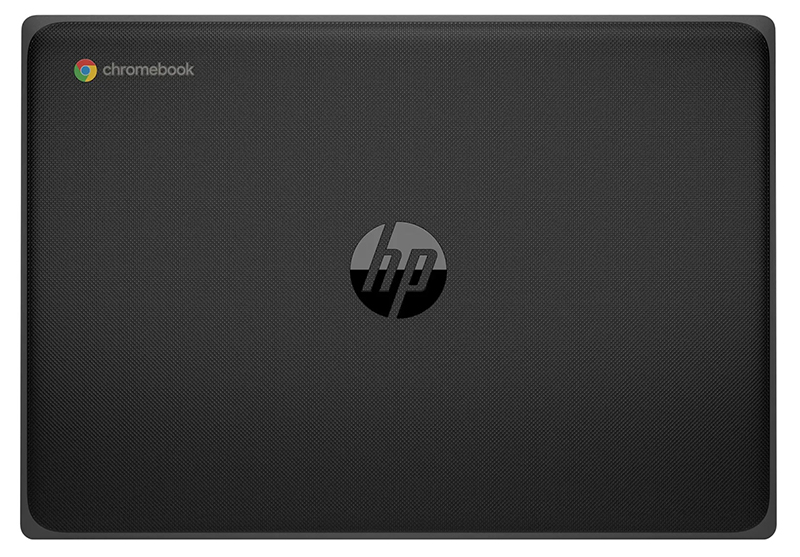
Released: January 2022
Price Range: starting at $349
Processor: Intel Celeron Pentium processors
Memory: Up to 8GB LPDDR4x
Storage: Up to 128GB eMMC
Screen: 14”
Resolution: 1366×768 or 1920×1080
Convertible: No
Touch: Yes
Ports: (1) USB-C port, (2) USB-A ports, (1) HDMI port, (1) headphone/microphone combo jack
Carrying the title of the world’s first rugged 14” Chromebook, the HP Fortis 14” G10 Chromebook is ideal for the educator seeking options. With option upgrade both storage and resolution, this Chromebook from the HP’s new Fortis line is sure to please.
From Chromebook parts procurement to buyback, AGParts Education is your number one destination for all things regarding your 1:1 Chromebook deployment. Supporting over 7,500 U.S. school districts, find out how we can help your district. Contact us today!

by AGParts Education | Chromebooks, Education Technology, K-12 Education
Have you heard the buzz about Chromebooks? Whether you’ve heard they’re being used by 40 million educators worldwide, or the fact that Chromebooks posted their best year in 2020, there is no denying their popularity. Which may make you wonder: why do schools use Chromebooks?
Today, we’ll answer that question and unlock why these devices are so popular, particularly in education.
What is a Chromebook?
Before we answer that question, we’re going to answer another: what is a Chromebook? A Chromebook is a type of laptop that runs on Chrome OS. Most work on a Chromebook is done via the internet, so having a reliable internet connection is essential. This doesn’t mean your Chromebook turns into a brick offline, but internet connection is necessary to provide vital updates, as well as sync and host apps.
Why do Schools Use Chromebooks?
First introduced in 2011, Chromebooks have only grown in popularity in both education and retail sectors. Four times as many Chromebooks were sold in 2020 than in 2019. In large part, this can be attributed to the shift to remote learning during the COVID-19 pandemic; however, Chromebook sales continue to soar. They continue to be a popular choice for schools, especially those with an existing 1:1 digital learning program. Here’s why:
Price Tag
Perhaps the simplest answer as to why schools use Chromebooks is their price tag. The cost of a Chromebook simply can’t be beat. With some models less than a $100, the average price for a Chromebook for education runs from $150-300. Not only that, but Chromebooks have a low lifetime cost, generally requiring little maintenance or repair.
Secure
Operating system updates and vital security patches come directly from Google. There is no need for antivirus software, virus protection is integrated with these updates. Generally, these updates run automatically and in the background without disrupting users. Knowing your K-12 devices are protected without having to lift a finger give tremendous peace of mind to schools.
One thing to note about these updates: Chromebooks only receive updates until their Auto Update Expiration date. This date signifies when Google will no longer support the model. On a new Chromebook, you can expect a lifespan of eight years. However, the clock starts when the device is manufactured, not when the device is purchased. If you purchased a 2020 Chromebook with an AUE of June 2028 today, you would have less than seven years to use the device safely.*
Low Maintenance & Easy to Deploy
With automatic updates provided by Google, there is very little to do in terms of maintenance. There is little to no software to maintain or update. Plus, Chromebooks are lean in hardware making them less susceptible to damage (not to mention lightweight!).
Equally easy is deployment. All that is needed is a Google account to get started.
Naturally though, as Chromebooks are used and transported, damage is bound to occur. Here’s the good news—they’re easy to repair and parts are generally affordable. Many tech departments opt to perform repairs in house.
Long Battery Life
With most models boasting a battery life of ten plus hours, Chromebooks can easily power students through an entire school day with charge to spare.
Easy to Use
Chromebooks offer a straightforward user experience. Using a Chromebook is as simple as opening your internet browser. No fancy frills or hoops to jump through, making completing assignments and participation a cinch.
When managing your K-12 Chromebooks, be sure to partner with a company you can trust to assist with all your 1:1 Chromebook needs. From Chromebook parts to buyback, AGParts Education supports 6,000+ school districts across the United States. Contact us today to see how we can help your school district today.
*Based on date of publication (September 2021).
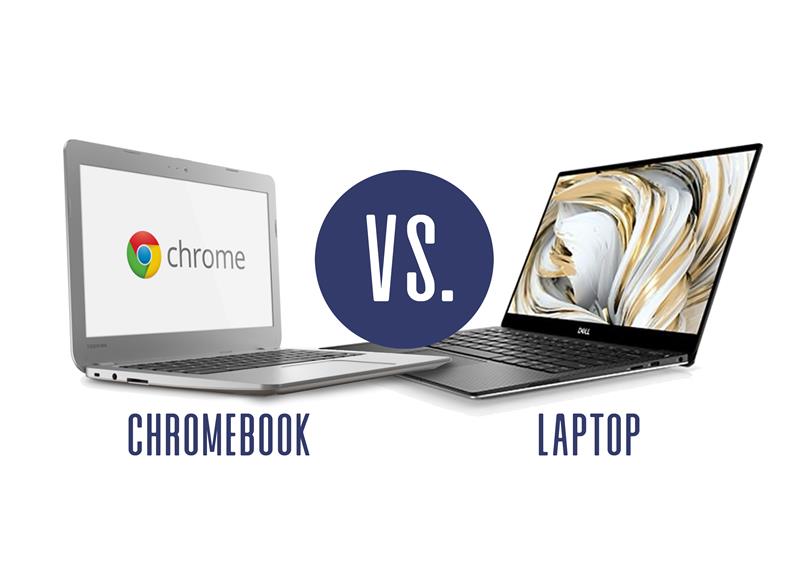
by AGParts Education | Chromebooks, Education Technology, K-12 Education, Laptops
What is the best type of device for your district? Chromebooks are stripped down laptops with a straightforward user experience. Windows laptops and MacBooks are more complicated devices but have their own benefits. Today, we’ll discuss Chromebook vs laptop for students, and what the best option is for your district.
What is a Chromebook? What is a Laptop?
A Chromebook is a type of laptop that runs on Chrome OS. Most work on a Chromebook is done via the internet, so having a reliable internet connection is essential. This doesn’t mean your Chromebook turns into a brick offline, but internet connection is necessary to provide vital updates, as well as sync and host apps.
In the simplest terms, a laptop is a portable computer, created as the compact and portable version of desktop computer. Notebooks are a thinner version and lighter version of a laptop, and Ultrabooks are thinner and lighter than notebooks typically with loads of features. For the purposes of this article, a laptop refers to any non-Chromebook portable computer, specifically a Windows laptop or MacBook.
Chromebook vs Laptop Side by Side
Operating System
Chromebooks run on Chrome OS, an operating system designed by Google. Windows laptops run on Windows, an operating system designed by Microsoft. Finally, MacBooks run on macOS engineered by Apple.
Each operating system carries its own strengths and weakness, and much is subjective to the user. Chrome OS and macOS have the most straightforward interfaces, making them easier to use for students, while Windows is most complex. MacOS is most intuitive when it comes to multitasking and having multiple applications and windows open. Chrome OS is likely the least multitasking friendly. Ultimately, this all comes down to the students’ needs.
Software & Applications
This is one of the biggest differences when comparing a Chromebook vs laptop. Chromebooks have virtually no software. Most applications run in Google Chrome. Applications are downloaded from the Google Play Store, and no third-party software can be installed on a Chromebook. This makes them boot very quickly.
Both Windows laptops and MacBooks have software, sometimes pre-installed, or bundled, software. Additionally, users often install software packages like Office 365 or Adobe.
No software makes Chromebooks extremely easy to deploy and manage. Setup on a Chromebook is generally simpler than its counterparts. Updates are generally easier to manage, and there is no need for your technology department to install software on hundreds, or thousands, of devices.
Storage
When comparing devices, you may be shocked to see how little local storage a Chromebook needs, especially when compared to its Windows laptop and MacBook counterpart. Chromebooks can run on as little as 16GB of local storage. This is largely due to no software. Additionally, Chromebooks rely on Google Drive as their cloud-based storage system.
Although a Windows laptop and MacBook both have their own cloud-based storage, they still boast a large amount of local storage. It is not uncommon to find a laptop with 128GB to 256GB to as much as 1TB. There really is no upper limit in terms of storage
Again, this makes Chromebooks very attractive to schools. Less storage means less money per device.
Virus Protection & Security
Another big difference in Chromebooks vs laptops—virus protection. Google designed Chromebooks with security in mind. For Chromebooks, there is very little to attack, which makes them protected and secure devices. Google delivers updates and vital security patches automatically until the Chromebook’s AUE. These updates require little to no maintenance or oversight making the process easy peasy.
Windows laptops, and MacBooks, are much more complicated devices. MacBooks are generally considered secure devices as macOS has many protections in place against viruses and malware.
On the other hand, Windows laptops are most vulnerable to viruses and malware. They own the market share, making them a more attractive target to malware makers. And while Windows does come with Windows Defender, these laptops generally require a third-party antivirus software in addition. This translates to more maintenance and oversight when using Windows laptops.
In this case, save the headache—Chromebooks are the easiest and bring most peace of mind in knowing your students and devices are protected.
Maintenance
Expect Chromebooks to require the least amount of maintenance, largely due to no software and integrated virus protection with automatic updates from Google. Generally, Chromebooks are also easy to repair in house. This is another attraction—repair can be as simple as ordering a part and watching a tutorial. We have a complete library of 175+ Chromebook repair tutorials for a variety of models.
Expect a Windows laptop to require the most maintenance in managing software updates and any other issues that may arise.
Price
While Chromebooks and some Windows laptops come in at comparable price points, MacBooks are the most expensive device. Unless your district plans to buy a refurbished model, expect to pay an upwards of $1,000 per device.
Chromebooks and Windows laptops for education are affordable and you can generally find models between $200-$400.
Chromebook vs Laptop: The Winner?
Chromebooks make an extremely compelling case for any district. Low price, low maintenance, and easy to use, Chromebooks have everything a student would need for their work. Ultimately though, the winning device all comes down to the needs of your district and students.
When it comes to your 1:1 Chromebooks, AGParts Education has your back. From Chromebook parts to buyback, we support 6,000+ US school districts. Contact us today to see how we can help your school district today.
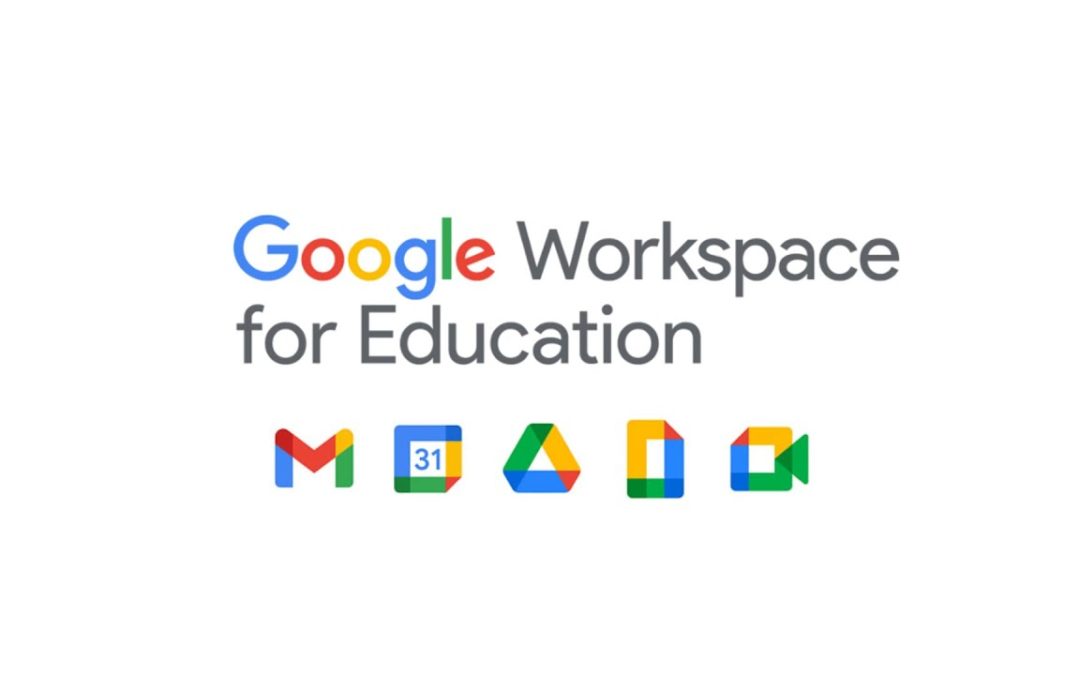
by AGParts Education | Chromebooks, Google Classroom, Google Workspace for Education, K-12 Education
Chromebooks are a popular choice for digital learning programs across the nation. With many benefits, they offer schools an affordable way to equip their students with computers. Running on the Chrome OS, Google also offers a comprehensive cloud-based office package designed for schools, Google Workspace for Education.
What is Google Workspace for Education?
Formerly G Suite for Education, Google Workspace for Education is a set of cloud-based applications to streamline classroom instruction.
Announced in February 2021, Google Workspace for Education includes all the products that 170 million educators and students worldwide rely on including Classroom, Meet, Gmail, Drive, Docs, Sheets, Slides, and more.
What’s included in Google Workspace for Education?
Google Workspace for Education includes 13 products for collaboration, productivity, communication, and organization, plus an admin tool.
Collaboration
A consistent challenge in remote or hybrid learning models is enabling collaboration. Without applications that can seamlessly allow collaboration, it risks being lost. Google Workspace for Education includes Docs, Slides, Sheets, Drive, Forms, and Jamboard (interactive white board) to promote working together whether together or apart.
Productivity
With Classroom and Assignments, educators are equipped with simple tools to save time on administrative tasks allowing them to focus more on teaching. It easily connects students with classroom content—syllabi, lectures, notes, teacher feedback, and assignments—essential for student engagement and success.
Communication
Arguably one of the biggest challenges of the past school year has been learning to be together while apart. Easy communication tools overcome this barrier and lay foundation for a solid learning environment. Gmail, Meet, and Chat connect teachers and students together easily,
Organization
Keep and Calendar will keep your staff and student organized and focused with to-do lists, reminders, and a meeting and events scheduler.
Security
The admin tool keeps you in control—safeguarding against digital threats.
Versions of Google Workspace for Education
There are now four versions of Google Workspace for Education, including a free version.
Google Workspace for Education Fundamentals
Formerly G Suite for Education, this is the free version with a new name and features. It still includes all the apps and security tools that were available in G Suite for Education. It also includes data loss prevention, user data settings with Vault, and will hold Meet recordings up to 30 days.
Google Workspace for Education Standard
A new addition that was released in April 2021 is Google Workspace for Education Standard. In addition to Education Fundamentals, this version provides:
- Enhanced security and control to make digital learning more secure
- Greater visibility through various tools like advanced audit log
- Device and app management
- Investigation Tool
The Teaching and Learning Upgrade
Available for Fundamentals or Standard versions, this upgrade includes advanced multimedia features and tools that focus on critical thinking and academic integrity. The upgrade affects Meet, Classroom, and Assignments.
Google Workspace for Education Plus
Formerly G Suite Enterprise for Education, this version is the culmination of the other three versions and is the most comprehensive in teaching and learning tools, security, and analytics. It is also the most expensive version. Features include:
- Increased storage capacity
- Meet live streaming for up to 100,000 in-domain viewers
- Integrated approvals for Gmail, Drive, Docs, etc.
- Classroom sync with SIS vendors (upcoming late 2021)
Qualifications for Google Workspace for Education
Globally, K-12 schools and higher-education learning institutions are eligible for Google Workspace for Education if they meet certain criteria. Qualifying homeschool co-ops in the U.S. are also eligible.
K-12 and higher-education institutions must be government recognized and formally accredited awarding nationally or internationally approved certifications at the primary, secondary, or tertiary (post-secondary) level.
Why Google Workspace for Education?
Google Workspace for Education offers comprehensive tools for educators to easily manage and streamline their classrooms, sections, and students. It’s a one-stop shop for everything a teacher could need and keeps teachers and students connected whether together or apart.
It’s also ad-free, reliable, and secure. With 24/7 access and one login, it really doesn’t get any easier.
AGParts Education supports 6,000+ innovative 1:1 school districts in Chromebook parts supply and technology buyback. Contact us today to see how we can help your school.

by AGParts Education | Chromebooks, Educational Resources, K-12 Education, Open Educational Resources
The internet has united communities globally, easily allowing for the sharing of resources in nearly every industry. In education, these resources are called open educational resources. Open educational resources for K-12 can unlock new learning pathways and engage students in exciting ways.
What are Open Educational Resources?
Open educational resources (OER) are teaching and learning materials that are free to use and disseminate. They are either public domain or released under a license that allows the materials to be freely used.
Types of OERs
OERs cover a very broad range of materials and can include any of the following:
- Textbooks
- Lesson Plans
- Lecture Notes
- Syllabi
- Assignments
- Handouts
- Tests
- Images
- Videos & Other Multimedia
- Historical Documents
Why OERs Are Important
OERs overcome copyright and license barriers that prevent vital educational resources from being accessed and shared locally, regionally, and globally.
Fundamentally, education is about sharing. A teachers share knowledge with students. Teachers share lessons plans with each other. Until the advent of the internet, books were the main channel to share collective knowledge.
The internet has provided something that books could never do—access. The internet made it possible for people worldwide to access and share educational resources without the high cost of ordering or shipping books. The only thing that stands in the way of this access is copyright laws.
While necessary, copyright laws can prevent the shared nature of educational resources. OERs overcome this hurdle by providing materials that are public domain or under a license that allows materials to be freely used, like a creative common license.
The benefits of OERs are many. They’re access and flexibility are unparalleled. Not only do they supplement lesson plans, but they can also expose students to wider range of learning materials. OERs can also reduce the cost of education for students, in turn reducing financial burden, which is especially meaningful in low-income communities.
OER Limitations & Challenges
There are virtually no limitations with OERs. Since their free to use in the public domain or under a creative common license, they can also be adapted to lessons, curriculums, and students as needed. Educators can edit or modify OERs according to their specific needs. They can also continue to share original or modified OERs as they see fit.
In short, OERs can be:
- Reused in its original, unedited format
- Retained for personal archives or future reference
- Revised, edited, or modified based on needs
- Remixed with other similar content to create something new
- Redistributed in its original or edited version
However, herein lies the challenges with open educational resources. Since technically anyone can create an OER, ensuring quality resources can be problematic. Be sure to review OERs prior to class use to ensure they are credible and accurate. You can also use this set of downloadable rubrics from Achieve to verify quality.
Where to Find Open Educational Resources for K-12
Looking for open educational resources for K-12? Check out the below resources:
- OER Commons: public digital library of OERs
- Creative Commons: a nonprofit organization with a huge library of shared content
- Edutopia: while Edutopia is not solely an OER library, it does have many helpful guides and roundups
- World Digital Library: vast library of primary materials from countries and cultures around the world
- cK-12: OERs for K-12 with a STEM focus
- Khan Academy: free lessons from K-12 to early college in math, grammar, science, history, AP®, SAT®, and more.
- PBS Learning Media: curated videos, interactives, and lesson plans
- Achieve: while not solely an OER library, OERs are available
AGParts Education supports 6,000+ innovative 1:1 school districts in Chromebook parts supply and technology buyback. Contact us today to see how we can help your school.
Page 3 of 7«12345...»Last »













Recent Comments